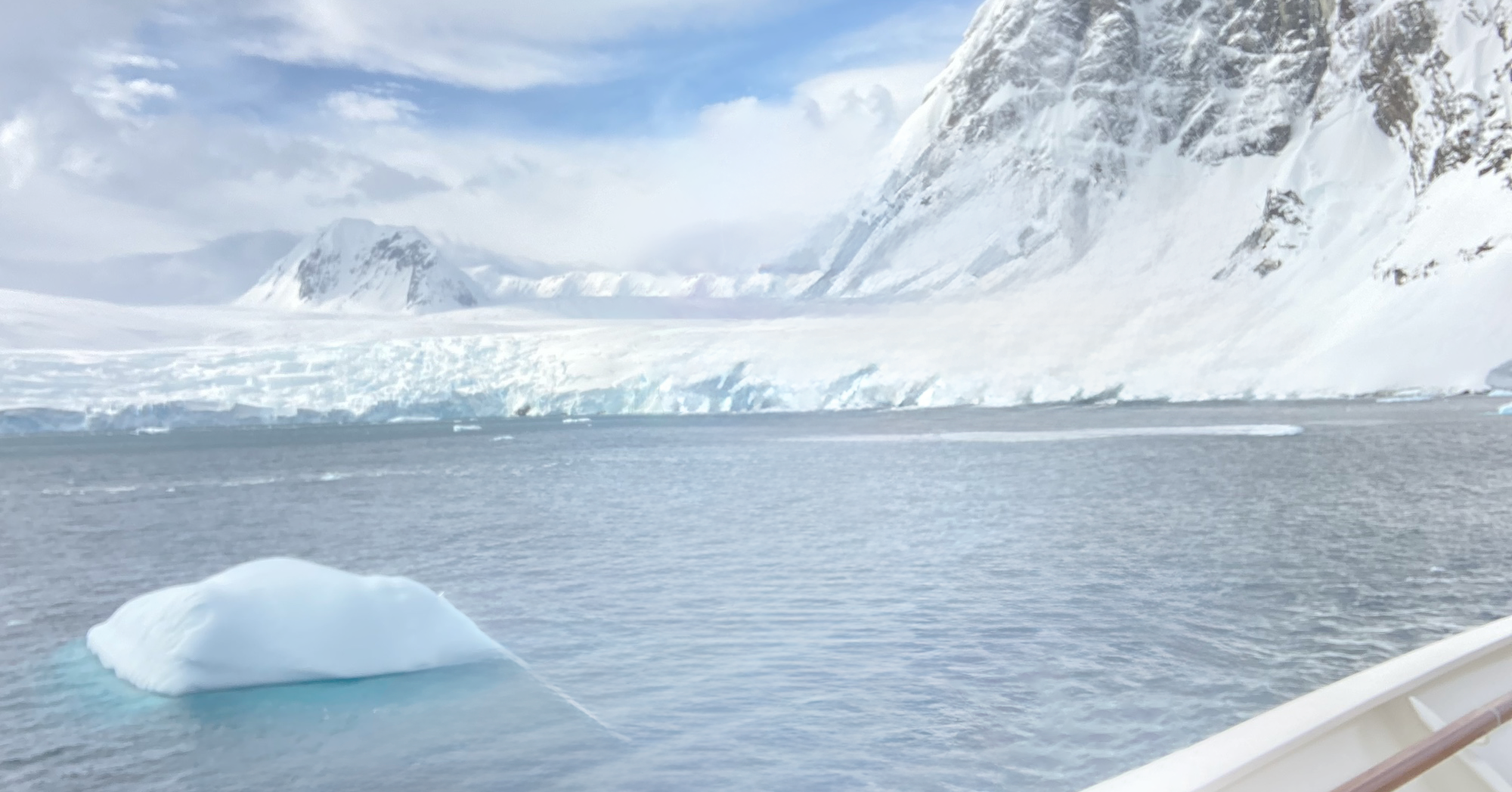An Introduction to Wildlife on Svalbard
- Svalbard has more polar bears than people - approx. population of 3,000
- One of the first species you're almost guaranteed to see are reindeer which graze like sheep close to Longyearbyen
- There are three species of terrestrial mammals on Svalbard and 19 species of marine mammal, including polar bears and walrus
- While generally low in terms of species diversity, Svalbard’s wildlife tend to be present in abundant numbers
- Summer is the peak time for wildlife activity and the best time to visit to maximise sightings
Svalbard Wildlife
Polar Bear
In a 2004 survey it was found that the polar bear population of Svalbard and Franz Josef Land numbered around 3,000 animals. Given that this means there’s more bears than humans on Svalbard, the chance of a successful sighting of the King of the Arctic is good. Once heavily hunted, polar bears on Svalbard have been protected by law since 1973 and numbers remain healthy.
Polar bears are seen throughout the archipelago, however in summer they’re more commonly sighted in the north and northwestern parts of Svalbard, and on the east coast where ice remains heaviest. A supreme apex predator, bear viewing from the safety of a ship or zodiac is the safest platform from which to observe these powerful animals.
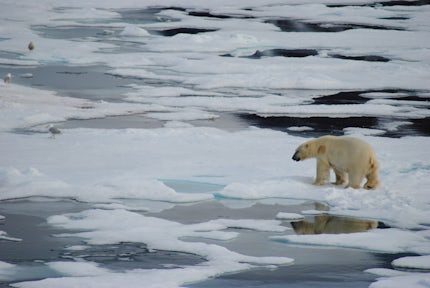
A bear explores Svalbard's sea ice
How to find a Polar Bear
Walrus
One of the few creatures to remain in the Svalbard area overwinter, the walrus is another iconic and instantly recognisable Arctic animal, courtesy of its impressively long and curved tusks. Svalbard’s walrus population is thriving with estimates of 3,900 animals in a 2012 survey - up from 2,500 in 2006.
Social by nature, walrus are often to be seen aggregated in groups resting on an ice-floe or on land in what’s commonly referred to as a ‘haul-out’. Walrus have a voracious appetite with molluscs being their main staple, which are swallowed whole. They can dive down to a depth of 260 ft/ 80m and stay underwater for up to half an hour. What they may lack in vision, particularly in murky water, they make up with their highly tuned whiskers.
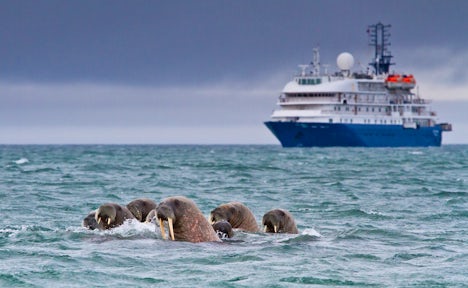
Svalbard Reindeer
It's far from uncommon to find reindeer wandering through Longyearbyen and as such you are almost guaranteed to see one, even close up. Technically a sub-species of reindeer, Svalbard reindeer are found throughout the archipelago wherever there’s sufficient vegetation for them and have no natural predators. The population of Svalbard reindeer is estimated at 10,000.
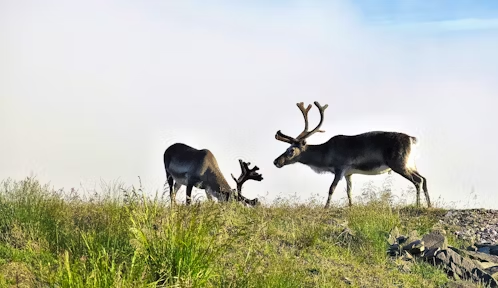
Ringed Seal
The favourite food of polar bears, ringed seal are the most widespread and common seal at this latitude and play a very important role in the Arctic food chain. Svalbard’s population is estimated to be around 100,000.
It’s the ringed pattern in this seals fur which gave it its name. In spite of their small size they’re capable of diving to +1,600 ft/ 500m. Due to the ringed seals dependence of ice, particularly for their berthing lairs, there is serious concern for them in the face of warming temperatures across the Arctic region, and climate change.
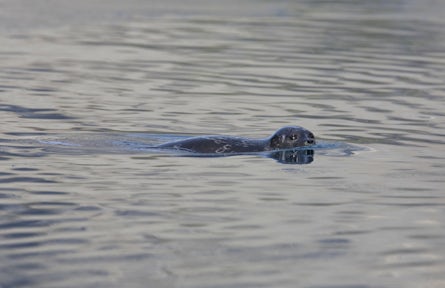
Arctic Fox
Svalbard has a large and thriving population of these charismatic opportunistic scavengers, which means there are good chances of sightings, particularly around bird cliffs where food is plentiful for them during summer and where their denning sites are commonly found.
The Arctic fox is ideally adapted for these high latitudes - being one of the few to remain over winter - with its thick, well insulated coat, fur covered paws and small rounded ears. This animal is unusual in that it appears in two different guises: blue and white. The white is characterised by a brown/ yellowish coat during summer and white all over in winter. To blend in. The blue fox by contrast is a dark brown/ blue colour throughout the whole year.
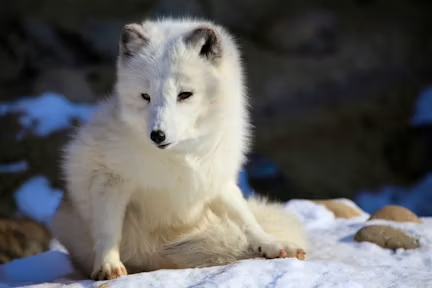
Birdlife
Svalbard is a magnet for birds every summer when literally hundreds of different species fly north to nest on every cliff and ledge in the archipelago, making it a paradise for birders.
The Arctic Tern migrates 70,000 km, from the Antarctic to the Arctic and back again, every year.
The Svalbard rock ptarmigan is the only land-bound bird species that overwinters in the archipelago. Among the seabirds it is normally only the common eider, the long-tailed duck and the black guillemot that overwinter in Svalbard, and only in small numbers along the coast.
The lack of trees and bushes in Svalbard means that the birds nesting here place their nests on the ground, on scree slopes or cliff ledges. Larger birds usually place their nests quite openly, while smaller birds, like the snow bunting, usually choose more protected sites in cracks, under rocks or on scree slopes.
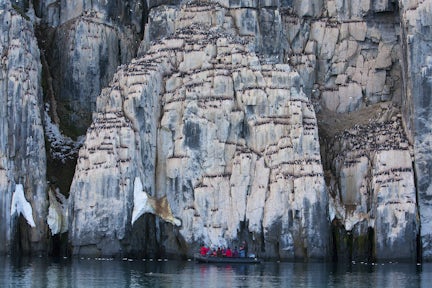
Beluga Whale
While no accurate figures on the size of Svalbard’s beluga whale population exists, they are in good numbers and are quite commonly sighted by expedition ships and kayakers. These medium sized toothed whales - also referred to as ‘white whales’ - are social and gregarious, and typically spotted in groups around coastal areas.
As with polar bears, it's common to find them near to glaciers where there’s a plentiful food supply.
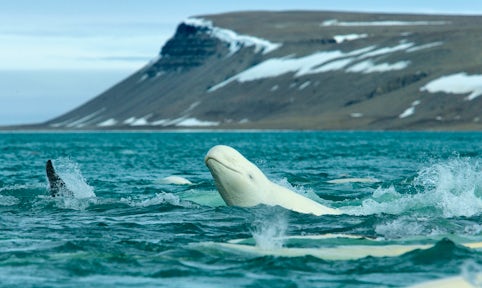
Belugas in the Arctic

Swoop says
Three species of terrestrial mammals are found on Svalbard, and 19 species of marine mammal, including polar bears and walrus.
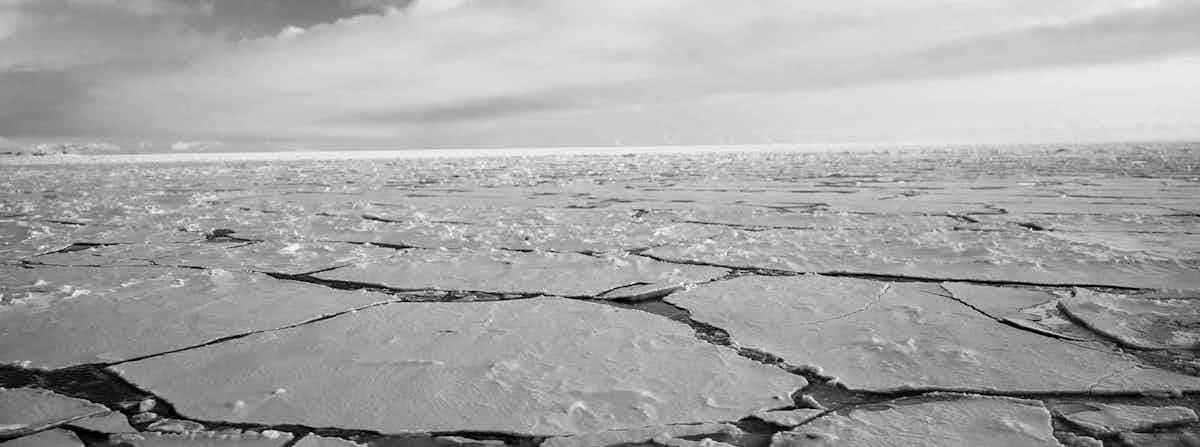
What our customers think of Svalbard Wildlife
Review:
Most Popular Svalbard Wildlife Trips
Special Offers:Swoop has access to the widest range of offers and can help you find the right trip, cabin, & price.
Discover Svalbard
When to Go
Wildlife diversity peaks when migratory birds return to breed and there is intense bird activity at sea, in the bird cliffs and on the islands. Only the hardiest species like Svalbard reindeer, polar bears, Svalbard rock ptarmigan and Arctic foxes can be seen in winter.

How much does a Svalbard wildlife cruise cost?
Svalbard cruises vary in duration from 6 - 13 days which is reflected in the individual voyage cost. The most common trips are 8 - 11 days in length. The following prices are merely just guidelines as there is variation between ships:
- 6 - 8 days trip approx. $USD 3,500 per person
- 8 - 11 days trip approx. $USD 4,600 - $5,600 per person
- 13 days trip approx. $USD 7,500 per person
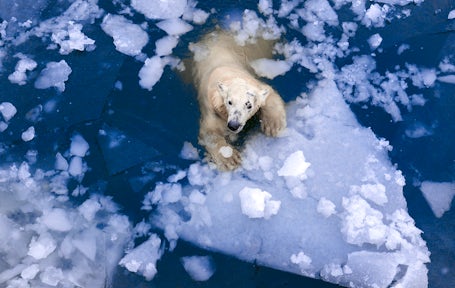
Specialist Photography cruises
For wildlife enthusiasts who take their travel photography seriously and are drawn to the idea of travelling with like-minded people, there’s a limited number of photography focused departures each season. These tend to be longer in duration to maximise photo opportunities and are designed very much with the photographer in mind - photo workshops, a professional photographer-in-residence and longer landings.
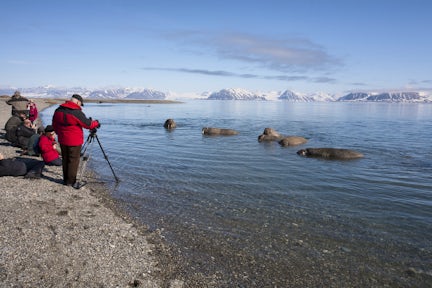
FAQs about Wildlife on Svalbard
-
Will I see a polar bear?
It’s the question which everyone asks. With more polar bears than humans, Svalbard is prime bear country and offers good chances of sightings. We’ve had lucky past customers who have seen 18 in the course of a week’s cruise. However, as ever with wildlife, sharp eyes and an element of luck are required.
-
Will there be guides on board my Svalbard cruise?
Yes, each expedition ship has an experienced team of polar experts on board who will act as your guides during daily landings and lecturers while on board ship. All these expedition cruises - regardless of which ship you choose - have a strong educational dimension.
-
How do I get to Svalbard?
The only flights to Svalbard are from Oslo or Tromso in Norway to Longyearbyen.
Plan your trip
.jpg?auto=format,enhance,compress&fit=crop&crop=entropy,faces,focalpoint&w=580&h=300)
Svalbard
Deep inside the Arctic Circle and only 500 miles from the North Pole at its most northerly point, the Svalbard archipelago offers a truly Arctic experience at the edge of the …
Discover More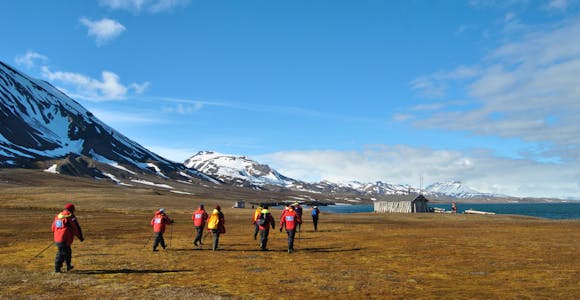
Getting to Svalbard
Svalbard is geographically closer to the North Pole than to Norway. Surprising then, that getting there is quite so straightforward, with regular flights from Norway to …
Discover More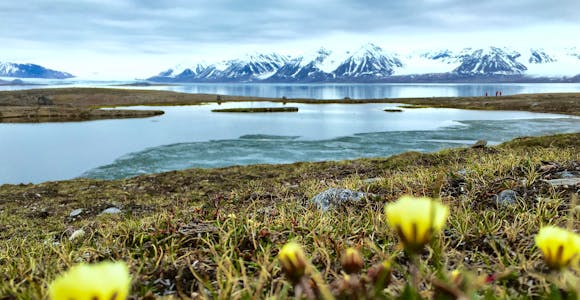
When to visit Svalbard
While Svalbard may be an almost year round destination, the changing weather, number of daylight hours, amount of ice and snow conditions through the year all have a marked effect …
Discover More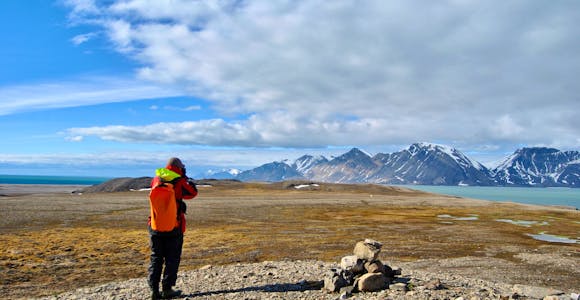
Help Me Choose
We're all clear on where the Arctic is located and why we want to visit, but its vastness and the sheer variety of experiences on offer can be a real challenge when deciding where …
Discover MoreSvalbard
Deep inside the Arctic Circle and only 500 miles from the North Pole at its most northerly point, Svalbard - or Spitsbergen as it's often referred by - offers a truly Arctic experience at the edge of the inhabitable world.
Ready to Book Your Arctic Adventure?
Listen
We'll spend some time listening to your aspirations, then discuss the kind of experience that might suit you.
Match
Next we'll discuss the options, shortlist the best trips for you and present you our impartial recommendations.
Reserve
We'll place a 24 hour hold on your preferred option - without obligation - whilst we talk through the details.
Our team of experts are ready to help you with any questions about a trip to the Arctic.

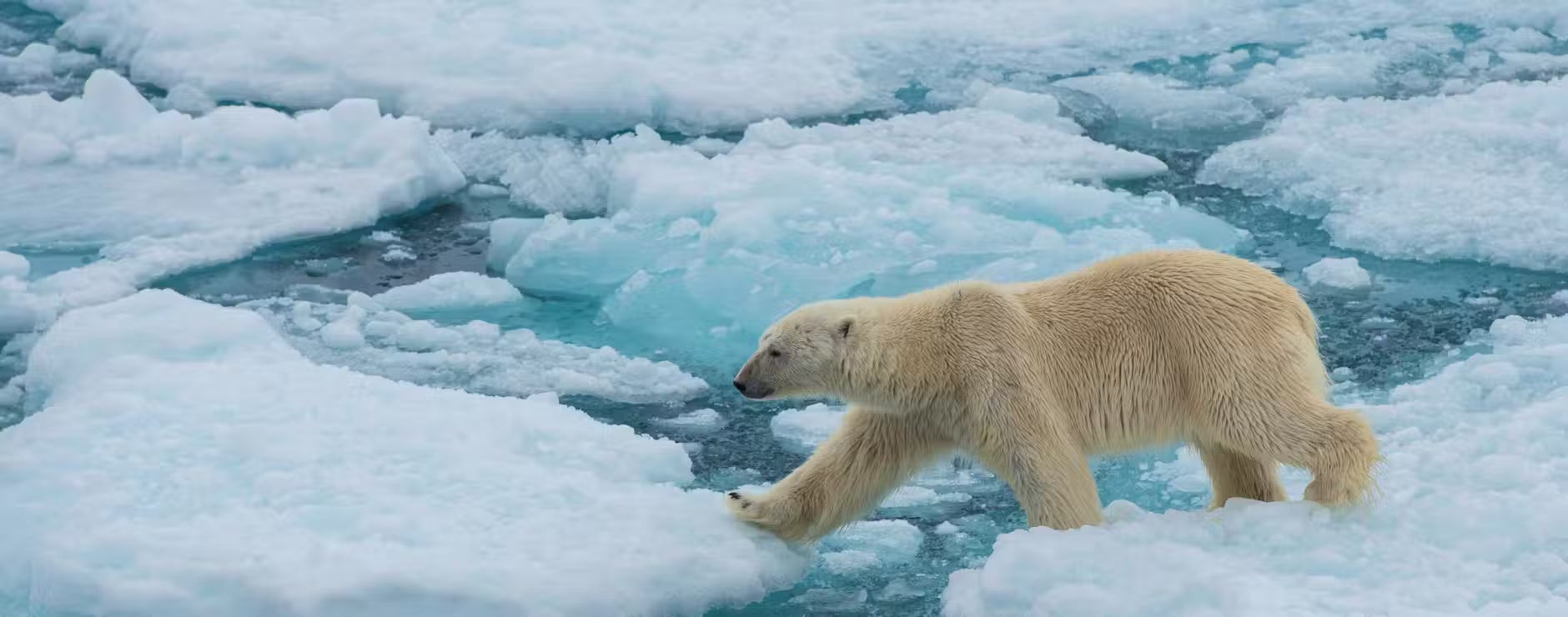


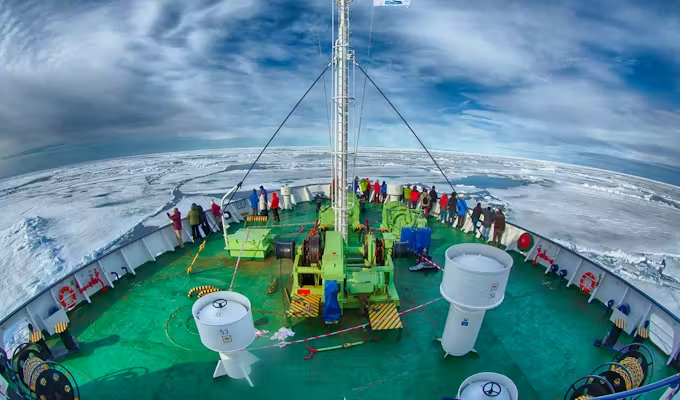
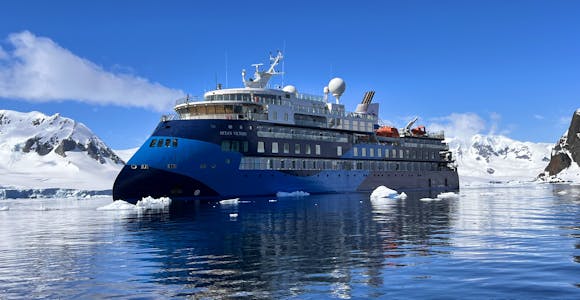
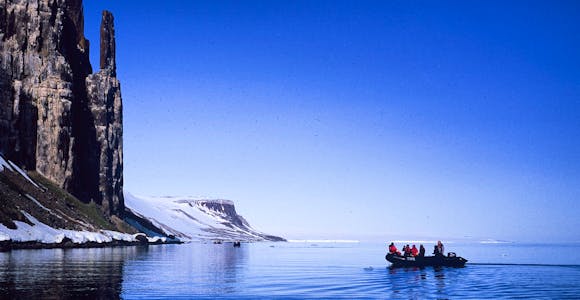
_(3).jpg?auto=format,enhance,compress&fit=crop&crop=entropy,faces,focalpoint&w=580&h=300)
